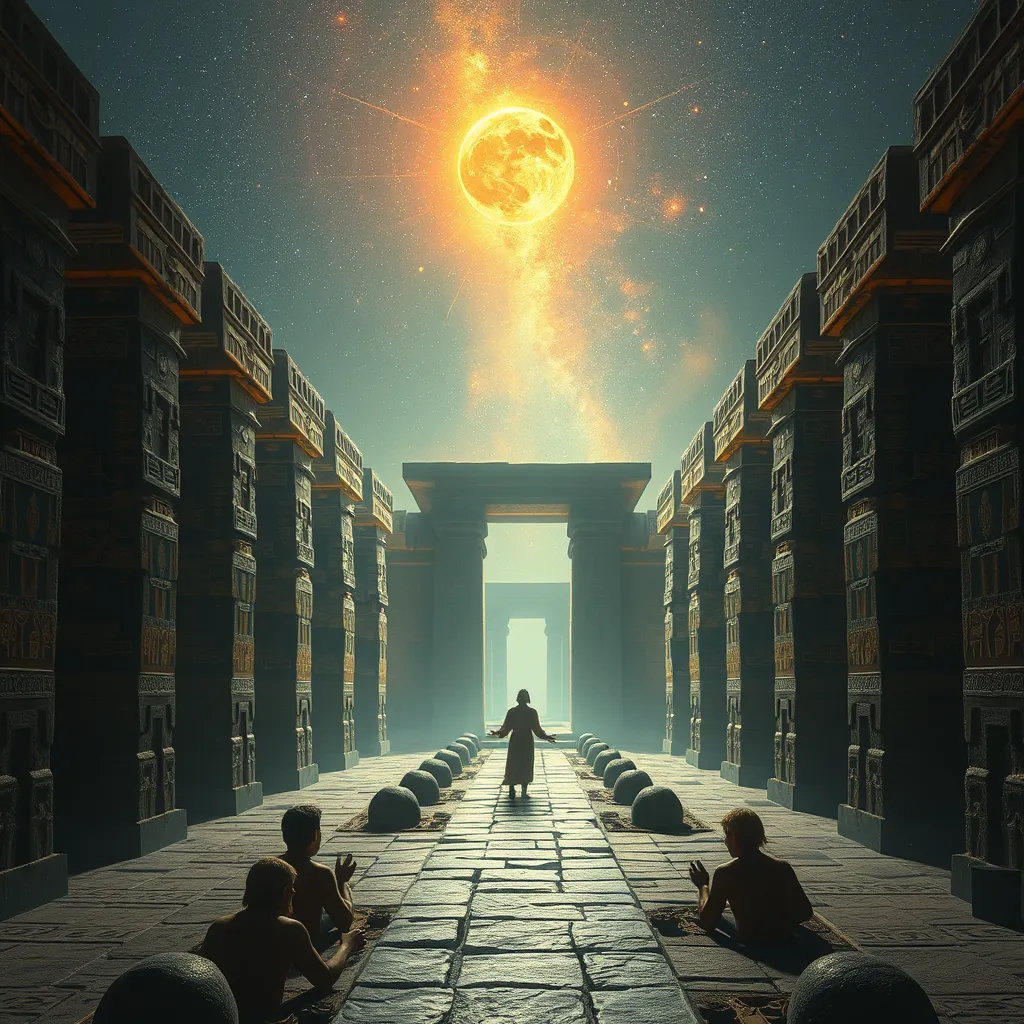The Duat: A Realm of Hidden Wonders
I. Introduction
The Duat, often referred to as the Egyptian underworld, is a complex and enigmatic realm that plays a crucial role in ancient Egyptian mythology. It is depicted as a liminal space that the deceased must navigate to reach the afterlife. The Duat is not merely a place of darkness and decay; it is rich with symbolism and significance that reflects the beliefs and values of ancient Egyptian culture. This article will explore the importance of the Duat, its mythological origins, and the mysteries that envelop this fascinating realm.
II. The Mythological Origins of the Duat
The concept of the Duat has its roots in the ancient Egyptian belief system, which is characterized by a rich tapestry of gods, goddesses, and cosmological narratives. The Duat is mentioned in various ancient texts, including the Pyramid Texts and the Book of the Dead, serving as a guide for the deceased on their journey to the afterlife.
Key deities associated with the Duat include:
- Osiris: The god of the afterlife, resurrection, and regeneration, Osiris is often depicted as the ruler of the Duat.
- Anubis: The god of mummification and the protector of graves, Anubis guides souls through the Duat.
- Thoth: The god of wisdom and writing, Thoth plays a role in the judgment of souls.
The Duat is also illustrated in various inscriptions, highlighting its significance in funerary practices and the beliefs surrounding death and rebirth.
III. The Geography of the Duat
The Duat is often described in ancient texts as a vast and complex landscape, composed of various regions that symbolize different aspects of the afterlife. Its geography can be likened to a mystical journey, where each area represents a trial or challenge for the soul.
Descriptions of the Duat’s landscape include:
- The River of Night: A dark river that souls must cross, symbolizing the transition from life to the afterlife.
- The Fields of Aalu: A paradise-like area where the righteous live in peace, akin to the idea of the Elysian Fields in Greek mythology.
- The Hall of Judgment: Where the “Weighing of the Heart” takes place, determining the fate of the deceased.
The various regions of the Duat serve as symbolic interpretations of the moral and ethical challenges faced by individuals during their earthly existence.
IV. The Journey Through the Duat
The journey through the Duat is central to ancient Egyptian beliefs about the afterlife. Upon death, the soul embarks on a perilous journey filled with trials that test its worthiness. The process begins with the deceased facing a series of challenges, including encounters with hostile entities and navigating treacherous landscapes.
A pivotal moment in this journey is the “Weighing of the Heart,” where the heart of the deceased is weighed against the feather of Ma’at, the goddess of truth and justice. The outcomes can be summarized as follows:
- Heart is lighter than the feather: The soul is deemed worthy and is granted passage to the Fields of Aalu.
- Heart is heavier: The soul is devoured by Ammit, a fearsome creature that embodies the consequences of a sinful life.
This process signifies the importance of living a just and virtuous life, as it directly impacts the soul’s fate in the afterlife.
V. The Guardians and Protectors of the Duat
Throughout the Duat, various guardians and protectors play essential roles in guiding and safeguarding souls. Key figures include:
- Anubis: As the primary guide of the deceased, Anubis ensures safe passage through the Duat.
- Osiris: After judgment, Osiris welcomes the souls into the afterlife, overseeing their final destination.
- Serqet: The scorpion goddess who protects against venomous creatures in the Duat.
In addition to divine protectors, ancient Egyptians often relied on protective spells and amulets to safeguard their souls during this treacherous journey. These artifacts were meant to provide strength and guidance, reflecting the belief in the power of words and symbols in the afterlife.
VI. Symbolism and Art in the Duat
The Duat has been a source of inspiration for countless artistic representations throughout ancient Egyptian history. Tombs and temples are adorned with intricate depictions of the Duat, showcasing its significance in the afterlife journey.
Common symbols and their meanings found in Duat art include:
- The Ankh: Symbolizing life and immortality, often depicted in the hands of deities.
- The Feather of Ma’at: Representing truth and justice, central to the judgment process.
- The Eye of Horus: Symbolizing protection and restoration, often used to ward off evil.
Through art and symbolism, the mysteries of the Duat were conveyed, serving as both a guide and a warning for the living about the importance of righteous living.
VII. Modern Interpretations and Cultural Impact
The concept of the Duat continues to resonate in contemporary literature and media, reflecting a fascination with ancient Egyptian beliefs and the afterlife. Works of fiction and film often draw upon the imagery and themes associated with the Duat, exploring ideas of life, death, and rebirth.
Moreover, the Duat has influenced modern spirituality, with many individuals seeking to understand the afterlife through the lens of ancient Egyptian wisdom. Archaeological discoveries, such as tombs and artifacts, have provided further insight into the beliefs surrounding the Duat, allowing for a deeper appreciation of its cultural impact.
VIII. Conclusion
The Duat remains a realm of hidden wonders, filled with mysteries that reflect the complexity of ancient Egyptian beliefs about life, death, and the afterlife. Its significance is evident in the myths, art, and practices that have endured through the ages. As we explore the depths of the Duat, we uncover not only the spiritual journey of the ancient Egyptians but also the lasting impact of their beliefs on our understanding of life and the beyond. The Duat invites us to delve deeper into the rich tapestry of ancient Egyptian culture and consider the enduring questions of existence and the afterlife.




